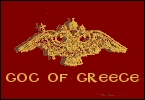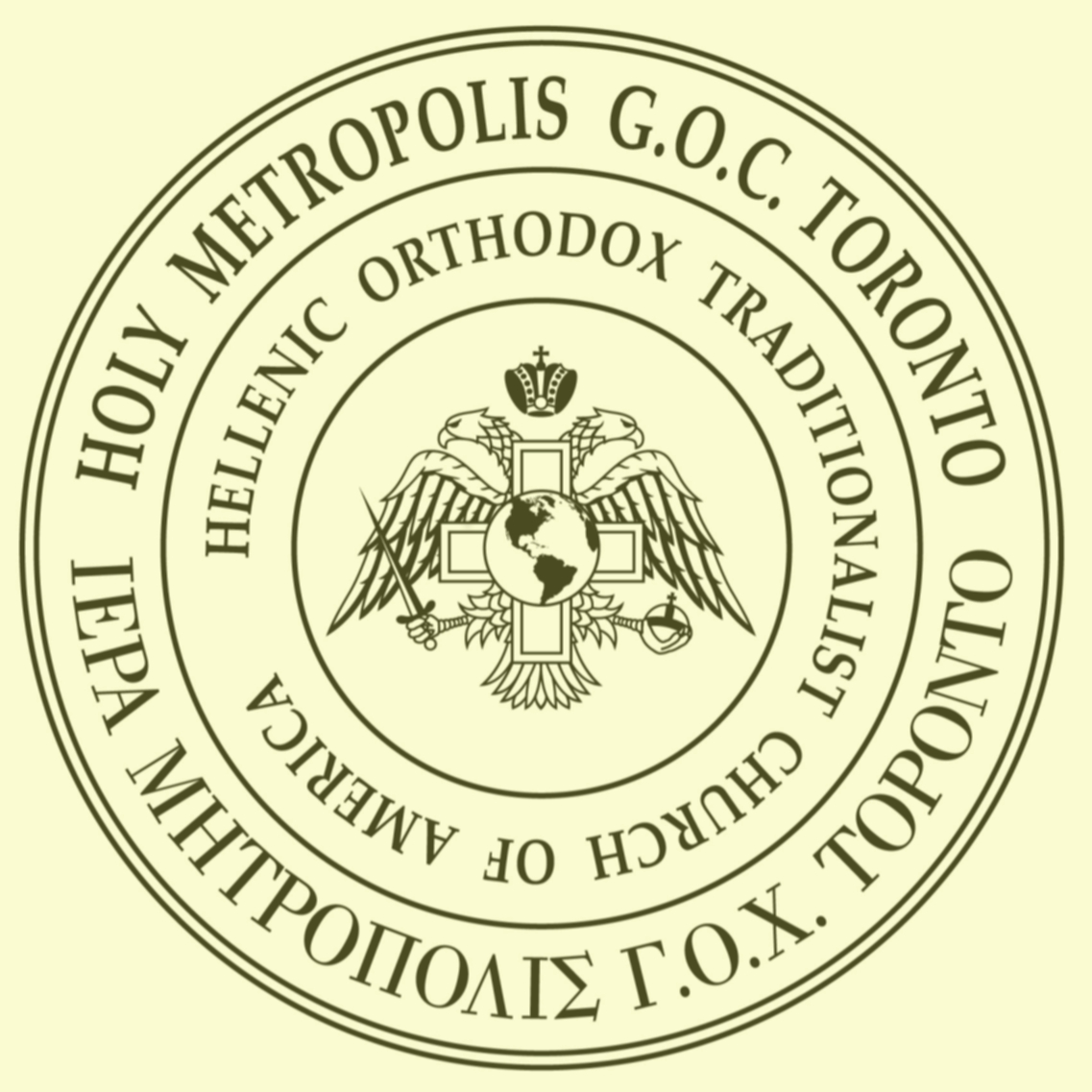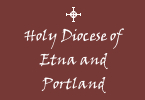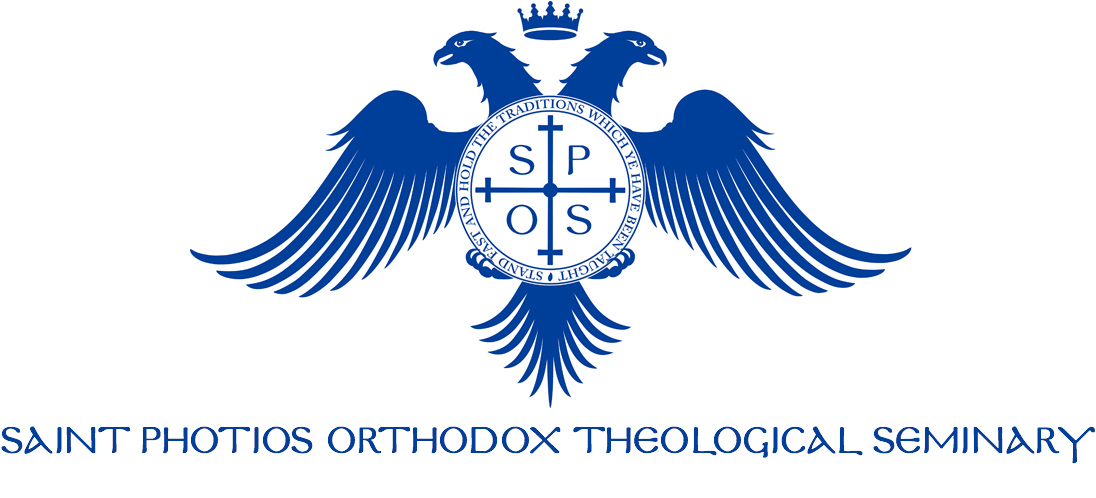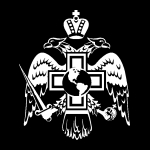The Criteria for Sainthood According to Orthodox Tradition
- Details
- Created on Wednesday, 31 July 2013 00:23
The Criteria for Sainthood According to Orthodox Tradition
A report by His Grace, Bishop Gregory of Christianoupolis given at the 5th Pan–Hellenic Clergy Synaxis
The criteria for Sainthood according to Orthodox Tradition is a sensitive issue, but it is also a key issue. The criteria are sensitive, because they are theological rather than moralist and humanist. This means that they can be distorted in ways that often are not immediately apparent. It is a key issue because the knowledge and deeper awareness of the criteria for Sainthood characterize modern man on the one hand; if one takes part in Orthodox Tradition, and on the other hand it characterizes the Church; if it is real or not.
We will develop the subject in thematic units, in order to facilitate understanding. In the first part traits or criteria for Sainthood and the presumption of Sainthood will be formulated, and in the second part we will examine how and to what degree an Orthodox Christian can be sanctified.
Attributes or criteria of Sainthood.
The first criterion of Sainthood is that the person has joined has joined himself to the Church through Holy Baptism. We recall the passage contained in the Gospel according St. Mark: “He that believeth and is baptized shall be saved” (Mark 16:16) and in the Gospel according St. John: "Except a man be born of water and of the Spirit, he cannot enter into the kingdom of God." (John 3:5). But there were also cases where martyrdom suffices. A “baptism of blood” was even considered a reason for Sainthood for the believers. St. John Chrysostom, referring to the martyr Lucian stresses: “Just as those who are baptized are washed in water, so those who suffer martyrdom are washed in their own blood.” (St. John Chrysostom to St. Lucian PG 50, 552).
Another criterion is the Orthodox mindset. The preservation and transmission of the Apostolic Tradition and the preservation of the legacy intact and unaltered is a crucial theme of salvation. St. Basil, in his letter to the Church of Antioch, says that he preaches only that which was received and taught by the Holy Fathers.
“As to creed, we accept no newer creed written for us by others, nor do we ourselves make bold to give out the product of our own intelligence, lest we make the words of our religion the words of man; but rather that which we have been taught by the holy Fathers do we make known to those who question us.” (St. Basil the Great, To the church of Antioch, Letter 140)
The virtuous life is also an important feature. The virtuous life is an influential catalyst in the liturgical life as a model for the fullness of the Church as a noetic compass. There are many examples of saints who imitated other saints in virtue, even in martyrdom.
Another criterion is the presence of miracles. Miracles have been recorded in the New Testament as a characteristic trait of the Apostles and generally of those who believe in Christ. The Lord, before His Ascension, addressing the Apostles gave them the power to heal the world. This is also shown in the Acts of the Apostles, starting with the Apostle Peter preaching and performing miracles.
The question arises: are miracles in and of themselves a criterion for sainthood? The answer is "no." The words of the Lord are clear: "Many will say to me in that day, Lord, Lord, have we not prophesied in Thy name? and in Thy name have cast out devils? and in Thy name done many wonderful works? And then will I profess unto them, I never knew you: depart from Me, ye that work iniquity." (Matt. 7:22–23)
Another feature is exceptional services offered to the Orthodox Church. Typical examples are St. Constantine Equal to the Apostles, who with the Edict of Milan introduced religious tolerance and stopped the persecution of Christians, and the Empress Theodora, who restored the holy icons.
Outstanding service to the Orthodox Church is not in and of itself an attribute to Sainthood. But in the case of St. Constantine there exists the visionary experience of the Holy Cross. His election by the Lord is shown by the hymn “having beheld the sign of the Cross in Heaven... Wherefore, having received the knowledge of the Spirit” and “like Paul, having received the call not from men.” The saint’s holy relics also constitute concrete evidence of Sainthood “whose reliquary doth pour forth healings.” (from the service for the Saint found in the Menaion on May 21st) Something similar happens with the relics of Saint Theodora, which is preserved in the Metropolitan church of Corfu.
Another criterion of Sainthood is incorrupt relics, which are fragrant and miraculous. Although such relics point towards Sainthood, they are not necessary a criterion for Sainthood. In some cases the liturgical practice proved that it can be a result of excommunication or cursedness, or disregard of the Holy Canons. A typical example is the so–called Third Synod of Moscow in 1666, in which involved five bishops of the Patriarchate of Constantinople, Patriarch Paisios of Alexandria, Patriarch Makarios of Antioch and hierarchy from the Church of Jerusalem, Georgia and Serbia also took part in addition to the Russian hierarchs. This Synod decided:
"Let no one dare henceforth to honor and revere the bodies of the dead which even in these times are found whole and incorrupt as being holy, without a credible witness and Synodical Approval; for many bodies are found whole and un-decayed, not because of holiness, but because they were under the ban and curse of a bishop or priest when they died, or because they transgressed and despised the divine and sacred cannons, they are found whole and un-decayed." (Delekane, Patriarchal Documents, Vol. 3 Constantinople, 1905, pp. 136-137)
Let us not give examples of modern individuals, who go around with various so–called relics of modern pseudo–saints, which they have managed to get to be fragrant and to stream myrrh by artificial means, deceiving the believers.
In summary, the traits or criteria for individuals to be canonized as saints of the Church are:
a) Holy Baptism
b) An Orthodox mindset
c) A virtuous life
d) Exceptional service and offering to the Church
e) Miracles
f) Holy Relics.
These are the attributes or criteria of Sainthood. But they are not by themselves all together or separately the criteria of Sainthood. The criterion of Sainthood is the deification of the person, that is, that the Saint has seen the glory of God and has known the mysteries of the Kingdom of Heaven.
The God–seeing saints are characterized as kings and lords, not with the secular meaning but that they reign over their passions, which have been transformed in Christ, and have kept unchanged the likeness of the divine image. St. John of Damascus says:
“But I call gods and kings and lords, not them who are such by nature, but them who are kings and lords of the passions and have preserved the likeness of the divine image unmarred as when as I was created (for the image of the king is also called king); and being united to God by choice and having accepted Him to dwell in them through this communion they have become by grace what He is by nature.” (PG 94, 1164 b)
The God–seeing saints are united with God in soul and body. This union is not moral, psychological and communal, it is theological. This means that the grace of God passes from the soul to the body of the saint “for by the mind has God dwelt in the bodies” (PG 94 1164 c).
This explains the incorruptibility of holy relics. Death, which is found in man’s own cells, is defeated because the grace of God dwells in the nous and through the nous it passes also to the body. This also explains the boldness which the Saint has before God because he prays for those faithful who pray in repentance: “they have stood before God with boldness” (PG 94 1164–1165 d).
The relics of these Saints are alive, they are not dead, and that is why they work miracles. The saints have been united with the Cause of life, Christ Himself and they show their presence within the Church through their indestructibility, streaming of myrrh, and miracles. It would not be wrong to say that the authentic, modern missionaries who express the will of God are the holy relics of the Saints. An example of the expression of the will of God is the relics of St. Euphymia, which revealed the Orthodox Tomos to the Holy Fathers during the Fourth Ecumenical Council (451 AD) and confirmed the true Orthodox positions.
The miracles which are performed are actually God's miracles performed through the holy relics. The reason is that God's grace dwells within the holy relics and it enlivens them and enables them to heal diseases, and to cause temptations and demons to flee. Another reason relics are miraculous is that the faithful approach them with fervent and steadfast faith.
In conclusion, the criterion of sanctity is the deification of the person. The saint has been united with God and his holy relics remain incorruptible, fragrant and miraculous, where God wills for it to be so. But the question remains: how can we determine that a modern man meets the criteria of Sainthood which allow his classification in the choir of the Saints? Before we answer, I would like to make two points:
First point:
The first point: the Church as a body, from Apostolic Fathers and the post–Apostolic Fathers did not officially proclaim, canonize or recognize saints.
The common conscience of the fullness of the Church, based on the laity, formed an opinion and noted that the Martyr in question is a Saint. This had a local character. The living Christians knew the Martyr, the manner of his martyrdom and burial. The entombed Saint's relics began to work miracles and then were revealed to be incorrupt, to stream myrrh or even to be fragrant depending on the situation. Then the consciousness of the people became the voice of God, the Saint’s reputation became known in neighboring churches as well until he became known as a Saint world–wide. This was done without any formality until the 11th century.
However, since that century when new persons were canonized as Saints in the conscience of the Church, either the Patriarch or the Synod took the initiative to introduce the celebration of the Saint’s memory in a more formal way throughout the Church “to the ends of the earth.” From this point in time it is suggested that the process has been influenced by the West. In 993 AD Pope John IV first canonized a Saint, and Pope Alexander III (1159–1181) argued that the canonization of a Saint is the exclusive right of the Holy See. (VERGOTI C. Hagiographical Manual Thessalonica 1992 p 134). Since that time many great Saints have been officially recognized by the Orthodox Church. However, it is noteworthy that the number of Saints that have been registered as such in the minds of the people is by far greater than those who received official conciliar recognition.
Therefore the Church, – at least for the first ten centuries – had no rite or process for canonizing Saints but left the inclusion of a person in the list of Saints of the Orthodox Church to the conscience of the Orthodox clergy and laity and then afterwards listed the true Martyrs and Saints among the Saints of the Orthodox Church.
Second point:
The Church that can distinguish those points which testify with certainty that a person is a Saint, thus shows that it is a true Church. On the contrary a Church which recognizes Saints according to moralist criteria, shows that it is secularized and – intentionally or otherwise – distorts the list of Saints.
The distinction between Apostles and false–apostles, Prophets and false–prophets, the Righteous and the pseudo–righteous, Saints and pseudo–saints is a simple yet simultaneously difficult one. In this case there occurs exactly what occurs in the other sciences. That is, just as the doctor can discern the quack physician from the true physician, the architect can discern the pseudo–architect from the true architect, so the saint who has the grace of God, can discern the pseudo–saint from the true Saint. This is a simple part of the matter. The difficulty is whether we today we are holy enough to discern the Saints from the pseudo–saints.
The Church which canonizes someone as a "Saint" when they are not, thereby exhibits that it has lost of the true criteria of Orthodox spirituality. In other words it identifies Saints with non–saints; it identifies the Saints of God who heal, with the good people who follow other religions or doctrines. The experience of Orthodox spirituality is then distorted, changed or converted into a demonic spirituality with terrible consequences for man.
There are two main consequences. The first concerns the one who is honored as an alleged Saint. When one is honored as a "Saint" while he is not in fact a Saint but rather has need of the mercy of God, such a one is not helped by the faithful in our prayers. We ask for the “Saint’s” intercessions and we no longer pray for his salvation. So, rather than helping such a one, in need of God's mercy, we deprive him of what we could offer him. The second consequence concerns the believer. The faithful then pray to a person to whom they should not pray. There is even a risk of falling into demonic situations which increase the error, and then a vicious cycle begins: while one is praying to a pseudo–saint, instead of being healed and being guided into simplicity and holiness, he becomes complex and can in extreme cases can be driven to depression, and sickness of soul.
Therefore, the canonization of a person in the list of Saints of our Church is a subject which concerns the criteria of spirituality and sanctity. We can report today on the criteria for Sainthood with relative ease, but we can just as easily gloss over the criteria of Orthodox spirituality. Can we discern a saint today? If yes, then we have the enlightenment of the Holy Spirit. If not, then we are deprived of Grace, and it is advisable to direct ourselves toward Saints who have already been listed in the diptychs of our Church.
The Church is a factory which produces Saints. The Church that does not produce Saints is not a Church. The Church that produces Saints is the authentic continuation of the One, Holy, Catholic, and Apostolic Church. The “Church” that distorts the criteria for Sainthood, distorts the list of Saints and reduces the Saints to good people, and equates Christ with every other religious leader, is not the Church of Christ.
We rejoice that even today God reveals Saints in our Church in a peaceful way. It is our consolation, stimulating and strengthening us to continue the good fight. I feel that our Holy Synod under the presidency of His Beatitude Archbishop Kallinikos of the Genuine Orthodox Christians of Athens and all Greece so far has acted wisely. It allows the people and the clergy together with the Bishop to recognize contemporary Saints and to register them in the diptychs of our Church just like the early Christians. It does not making use of tactics and propaganda, but allows God to reveal His Saints. One example is St. Pachomios of Chios († 1905)
We regret however that the “official” Church today – intentionally or otherwise – has altered the criteria of Sainthood and has secularized itself to such a great degree that it has departed from the path of Orthodox Tradition. I will mention the case of Metropolitan Chrysostom (Kalaphates) of Smyrna (1867–1922), whom the “official” Church recognized him as a “saint” in 1992. This is an action which shows the degree to which they have distorted the criteria for Sainthood. Undoubtedly Chrysostom of Smyrna was an ethnomartyr. But nevertheless we cannot support his Sainthood, because he does not meet the essential criteria for Sainthood. On the one hand, there was no sign by God attesting to his sanctity, and on the other hand there are several Freemasonic publications which confirm that he was a member of a Masonic Lodge.
Another sad point is that the “official” Church keeps propagandizing new modern persons of last few decades as “Saints.” They do this through radio and television programs, brochures, books and the internet. These persons who are promoted as "Saints" have really shown in their lives they lived a spiritual life which – dare we say it – was also exemplary in certain circumstances. However, they are not Saints because there is no proof of their sanctity from God. There are no fragrant, incorrupt Holy Relics. Also, in some instances there is a question of their Confession of Faith which their lives exhibit. Therefore they have endeavored to make a Saints out of those who are simply good people. These are diversions from Orthodox Tradition and its criteria for Sainthood.
In continuation, I would like to expose some historical facts which show what point man can reach when he has separated from Orthodox Tradition and its criteria for Sainthood. Great care is also required, because the “official” Church has united itself in spirit with the Papacy and sadly – intentionally or otherwise – has corrupted and distorted what until now has been uncorrupted in the Orthodox world. The following figures show how much damage the Westerners have caused, in whom some of the hierarchy of the “official” Church today trust.
In the course of church history the first people who fought against the relics of the saints were the iconoclasts, then in continuation the Paulicians and Bogomils, who denied the incarnation of Christ, the Cross and the Holy Icons, and later the Protestants, who proclaiming that they believe in a purer and more spiritual Christianity which is closer to the dictates of the Gospel, without the “trappings” of Holy Tradition. However, they could not erase the respect and veneration for Holy Relics from the souls of the faithful.
However, the devil uses ten thousand ways to tarnish the pure feelings of the people. So, starting from Palestine and Egypt, and moving to Rome a dense network of tradesmen spread abroad who pillaged everything to buy and sell relics. The Crusaders took part in this trade as well as some monks and pseudo–monks.
What is interesting is that the Franks were trading nonexistent things like the sighs of St. Joseph the Betrothed, the tears of Christ and His footprints, and feathers from the wings of the Archangels Michael and Gabriel. In a French list from 970 AD, among the relics were the wood and other materials with which the Apostle Peter pitched the tents along with the Apostles James and John at the site of the Transfiguration, and seeds which were sowed the Gospel parable (Airgain, L 'Hagiographe p. 190). This commerce was such that it reached the point of impiety. The records speak for themselves. There are recorded 26 heads of St. Julian, 10 of St. John the Baptist, 6 of St. Andrew and 17 hands, 30 bodies of St. Pancratios, 3 bodies and 6 heads of St. Ignatius of Antioch, even though – as is known – St. Ignatius was eaten by lions (Saints, the Friends of God P.B. Paschou p. 151).
In our days we must be especially careful, as never before. We must be a part of the factory which produces Saints, which is the Church headed by Christ and His friends, the Saints. Then we can labour correctly to treat our soul, praying that we will be able to discern a modern Saint from a pseudo–saint, and to feel the grace of God guide us unto salvation through intercessions of the All–Holy Theotokos and all the Saints.
Translated from the Greek
Orthodox Awareness
Ecumenism in the Homestretch and the Orthodox Witness of a Contemporary Saint and Confessor
A Synodal Gathering of the Church of the Genuine Orthodox Christians of Greece at the Port Authority of Piræus
Keynote Presentation on the Sunday of Orthodoxy: February 16/March 1, 2015 by His Grace, Bishop Klemes of Gardikion, Secretary of the Holy Synod
Ecumenism in the Homestretch and the Orthodox Witness of a Contemporary Saint and Confessor
Ἡ Τελικὴ Εὐθεῖα τοῦ Οἰκουμενισμοῦ καὶ ἡ Ὀρθόδοξη Μαρτυρία Συγχρόνου Ὁμολογητοῦ Ἁγίου
Missions
Saint Matthew the Evangelist, Jonesboro, Arkansas
Jonesboro is a town located near the Eastern border of Arkansas, with a population of approximately 60,000. From a human standpoint, it’s not the most likely candidate for a traditional Orthodox mission, but for an Orthodox Christian who orders his priorities around Christ and His Church, it makes perfect sense. Read more...
Youth
2025 Youth Conference
Please join us for the 2025 youth conference in Toronto, Ontario, Canada! To learn more, visit the conference website.
Ask A Priest
Civil Annulment's Effect on Church Marriage?
Q. This concerns a U.S. marriage. If the marriage is civilly annulled, what is the effect upon the Church marriage? Is it also annulled? Read more...

